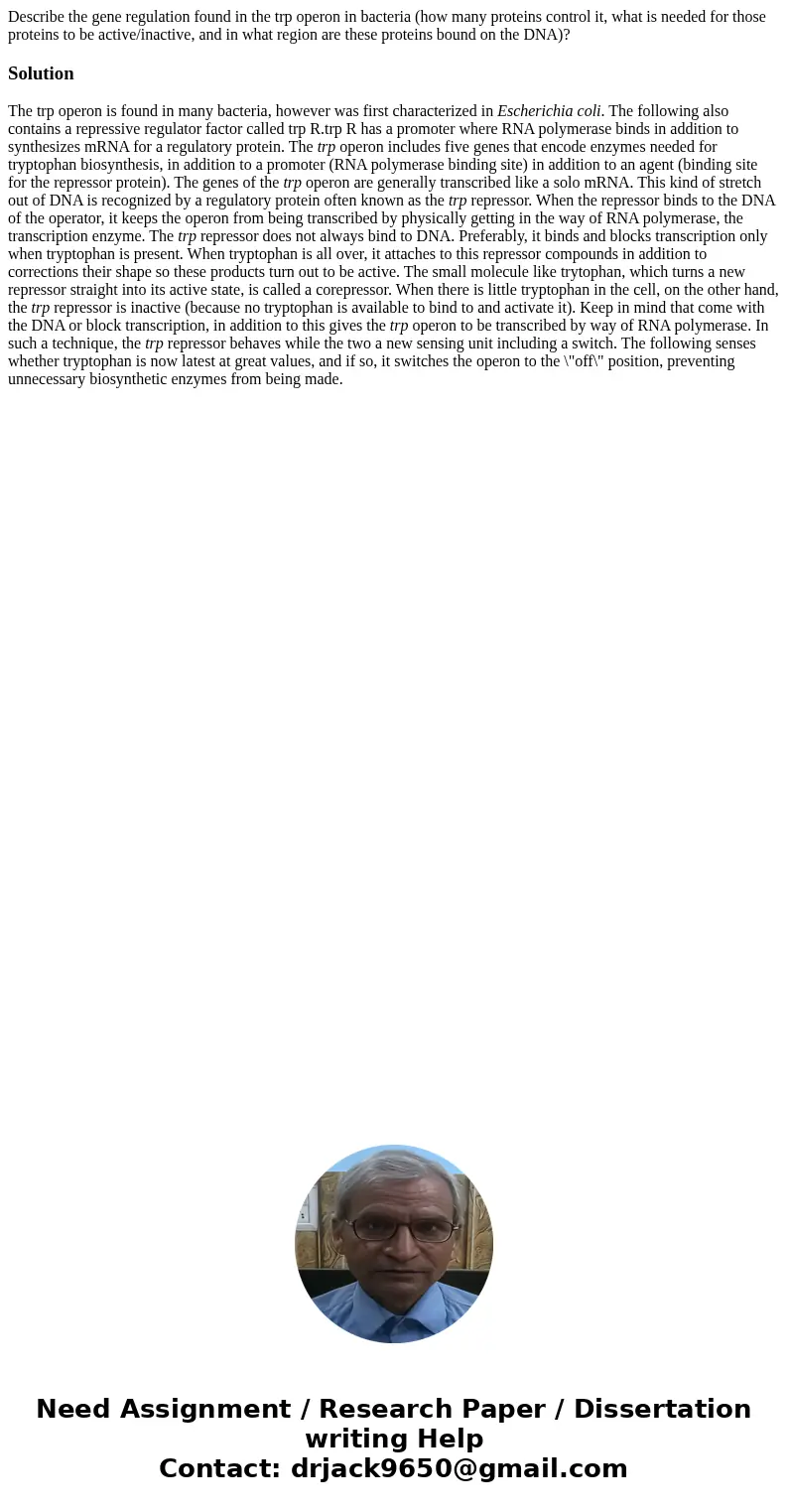Describe the gene regulation found in the trp operon in bact
Describe the gene regulation found in the trp operon in bacteria (how many proteins control it, what is needed for those proteins to be active/inactive, and in what region are these proteins bound on the DNA)?
Solution
The trp operon is found in many bacteria, however was first characterized in Escherichia coli. The following also contains a repressive regulator factor called trp R.trp R has a promoter where RNA polymerase binds in addition to synthesizes mRNA for a regulatory protein. The trp operon includes five genes that encode enzymes needed for tryptophan biosynthesis, in addition to a promoter (RNA polymerase binding site) in addition to an agent (binding site for the repressor protein). The genes of the trp operon are generally transcribed like a solo mRNA. This kind of stretch out of DNA is recognized by a regulatory protein often known as the trp repressor. When the repressor binds to the DNA of the operator, it keeps the operon from being transcribed by physically getting in the way of RNA polymerase, the transcription enzyme. The trp repressor does not always bind to DNA. Preferably, it binds and blocks transcription only when tryptophan is present. When tryptophan is all over, it attaches to this repressor compounds in addition to corrections their shape so these products turn out to be active. The small molecule like trytophan, which turns a new repressor straight into its active state, is called a corepressor. When there is little tryptophan in the cell, on the other hand, the trp repressor is inactive (because no tryptophan is available to bind to and activate it). Keep in mind that come with the DNA or block transcription, in addition to this gives the trp operon to be transcribed by way of RNA polymerase. In such a technique, the trp repressor behaves while the two a new sensing unit including a switch. The following senses whether tryptophan is now latest at great values, and if so, it switches the operon to the \"off\" position, preventing unnecessary biosynthetic enzymes from being made.

 Homework Sourse
Homework Sourse